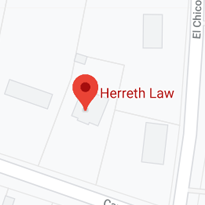Most car crashes are not accidents. In fact, human error accounts for over 90 percent of these incidents. Frequently, that error involves one of the five types of impairment, as outlined below.
Most jurors award rather large damages in driver impairment claims. Frequently, these tortfeasors (negligent drivers) know that they should not be behind the wheel. Yet the drive anyway, intentionally putting other people at risk.
Alcohol
Because it impairs both judgement and motor skills, alcohol causes about a third of the fatal crashes in Parker County. These victims usually have two legal options.
Attorneys may establish alcohol liability with direct or circumstantial evidence. Generally, if the tortfeasor was charged with DWI, the tortfeasor may be liable for damages as a matter of law. Negligence, or lack thereof, is irrelevant. In other situations, circumstantial evidence, such as erratic driving, bloodshot eyes, and an odor of alcohol, may indicate alcohol impairment.
Texas has a dram shop law. Bars, restaurants, and other commercial alcohol providers may be vicariously liable for damages if they sell alcohol to people who cause car wrecks.
Fatigue
Drowsiness and alcohol have roughly the same effect on the brain. Driving after eighteen consecutive awake hours is like driving with a .05 BAC.
Generally, these victims must use circumstantial evidence to establish fatigue. Such evidence includes the time of day or night, recent work or other schedule changes, the amount of sleep the tortfeasor had the previous night, and any medications the tortfeasor was taking at the time.
In commercial cases, there may be direct evidence of fatigue. Truck drivers and other commercial operators must comply with strict HOS (Hours of Service) laws at both the state and federal level. Tortfeasors who violate these laws and cause crashes may be liable for damages as a matter of law.
Drugs
In many jurisdictions, the number of drugged drivers outnumbers the number of drunk drivers. Drug impairment can be any of the following:
-
Heroin, cocaine, and other street drugs,
-
Vicodin, Percocet, and other opioid painkillers, or
-
Sominex, NyQuill, and certain other over-the-counter drugs.
Circumstantial evidence of drug impairment includes open pill bottles, current prescriptions, and glassy eyes. Direct evidence may be available as well, if the tortfeasor was so drug-impaired that the DWI law kicked in.
Sometimes, doctors who over-prescribe opioids may be vicariously liable for damages, but foreseeability is difficult to establish in these cases.
Distraction
This kind of impairment is the only one that happens after tortfeasors get behind the wheel. Distraction, especially device distraction, has the same effect on the brain and body as these other kinds of impairment.
If the tortfeasor violated the cell phone law and caused a crash, the tortfeasor may be responsible for damages as a matter of law. In other situations, such as a hands-free phone, victims may use circumstantial evidence to establish impairment.
Medical Condition
People with epilepsy, heart disease, and other conditions which could cause a sudden loss of consciousness should not drive.
Sometimes, the state suspends drivers’ licenses in these situations, so there is direct evidence of impairment. Other times, victim/plaintiffs may use circumstantial evidence to establish impairment. Circumstantial evidence on this point includes medical diagnoses, medicine taken, and erratic driving.
Impaired drivers often cause serious injuries. For a free consultation with an experienced personal injury attorney in Weatherford, contact Herreth Law. Attorneys can connect victims with doctors, even if they have no money or insurance.

